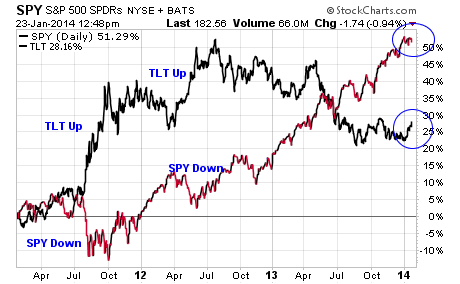ETF Money Flows Why This Indicator Should Matter To Investors
Post on: 29 Март, 2015 No Comment

At the end of every week and/or month, many investment and research firms send out a flood of data about the hot money flows in and out of ETFs and mutual funds. But what are ETF investors to make of the numbers and how can they use them to their advantage?
David Mazza, head of ETF investment strategy at State Street Global Advisors in Boston, explains the importance of watching ETF inflows and outflows. State Street Global offers the SPDR group of ETFs.
IBD: What have been the most notable money flow trends in ETFs this year? How do these flows compare to the same period last year?
Mazza: We have seen ETF investors moving money into equities, but not at the expense of bonds. They are favoring dividend strategies and midcycle sector ETFs within the stock market including the Technology (XLK ), Financial (XLF ) and Consumer Discretionary (XLY ) sector SPDRs.
In fixed income, investors are moving toward shorter duration strategies, especially those that have the potential to offer attractive yields in a rising-rate environment, such as leveraged-loan and short-term, high-yield bond ETFs.
Last year, ETF flows shared some similarities, but there are a few important differences, one of those being that investors were not sellers of precious metals and other commodities in 2012.
They also had far less focus on strategies that are resilient to changing interest-rate environments. In the current market environment, rising rates are clearly a concern.
IBD: What do these flow trends tell you about where we are in the market cycle? What’s your outlook on the market based on current flow trends?
Mazza: This year’s flow trends highlight that investors are becoming more comfortable with adding some risk to their portfolios, but have a persistent need for income.
We believe that the search for yield has evolved and will continue to favor dividend growth over dividend yield, midcycle sectors, and unique sources of fixed-income exposure, such as senior loans, short-term, high-yield and crossover bonds.
More recently, we see that ETF investors are also comfortable with non-U.S. equity exposure, especially European blue chip companies, as evidenced by the $1.4 billion of inflows added to the SPDR Euro Stoxx 50 ETF (FEZ ) during the first eight months of 2013.
IBD: What is the significance of looking at investment inflow and outflow? What do they tell you that daily/weekly/monthly price and trading volume don’t?
Mazza: Like price and volume, investment flows are another source of market sentiment, which many investors evaluate when making investment decisions. By parsing flows into categories, investors can also identify broader market trends than when looking simply at the price and volume trend of an individual security.














